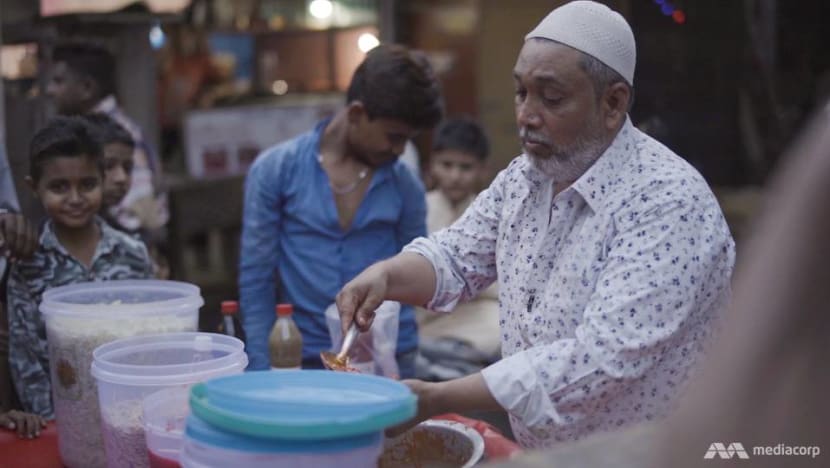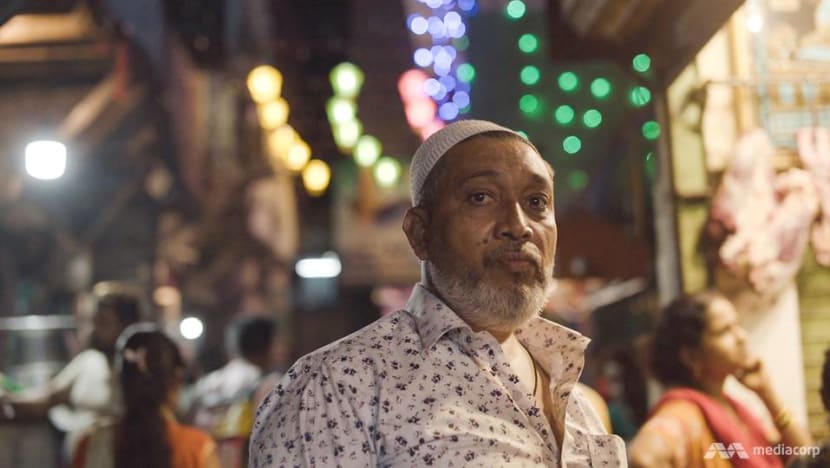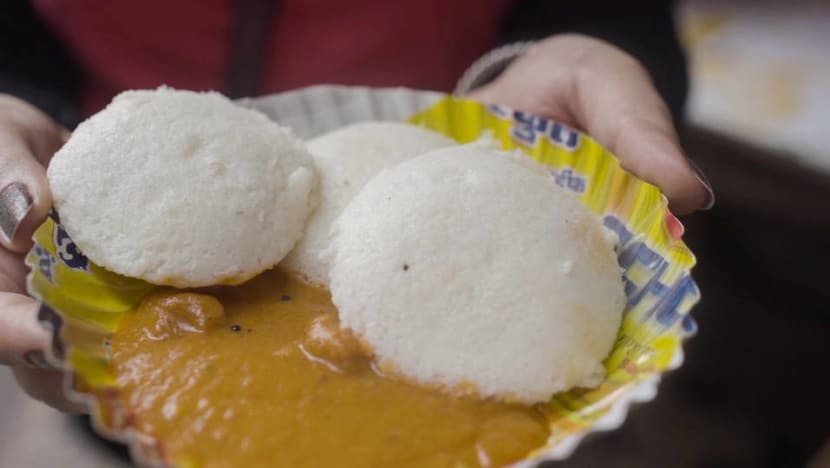How Chinese fried noodles by a Muslim hawker became a hit in India’s biggest slum
Dharavi may be one of the world’s most infamous slums but it is also a surprising melting pot of cultures, religion and food culture, as Slumfood Millionaire discovers.

Sohrab, a Muslim street vendor, created the dish Sohrab’s Chow Mein after working in a Chinese restaurant.
MUMBAI: In the middle of Dharavi, one of Asia’s largest slums, there is a popular Chinese fried noodle dish which has been given a unique Indian spin.
Sohrab’s Chow Mein is this curious half-Indian, half-Chinese hybrid dish of yellow noodles stir-fried in a wok with cabbage, green capsicum and flavoured with an oddly bright-red Manchurian sauce.
It’s the brainchild of slum resident Sohrab, who had previously worked in a Chinese restaurant.
“I came up with an idea to start my own street food business. This is my special dish. The customers love it,” he said.
This type of Chinese-Indian cuisine is a kind of “Chinese food which no Chinese has ever heard of”, said celebrity chef Vicky Ratani. “It’s India’s gift to the rest of the world. It's really good!”

Sohrab’s peculiar creation to cater to his customers is a reflection of the ethnically and racially diverse settlement of Dharavi – where a mix of Hindus, Buddhists, Christians, and Muslims like Sohrab live and work together, all desperate to escape poverty.
WATCH: Feeding The Dream: Street Food From Dharavi, Mumbai (full episode, 23:00)
THE MOST LITERATE SLUM IN INDIA
In Dharavi, a thriving community of leather tanners, potters, tailors and street hawkers have sprouted over the years.
Sohrab’s food stall is one of 5,000 businesses operating there and, together with 15,000 small-scale factories, they form the slum’s informal economy.
Vendors like Sohrab keep their prices cheap for the poorer residents. "I cook because I love people. It’s okay if you don’t have the money to pay for the food. You can still eat at my stall," he said.
He rents a small room in one of the dilapidated buildings where he lives with his family, including his wife, daughter and grand-daughter.
“We try to fit everything inside because the bigger rooms cost more. We can’t afford anything other than this right now,” he said.

Every day, the whole family chips in to help prepare the food for his business. His other Chinese-Indian speciality is Manchurian Balls, or cabbage fritters with Manchurian sauce, a thick glutinous sauce believed to have been created in the 1970s by Nelson Wang, a Chinese chef born in Calcutta.
Sohrab said he can earn up to 25,000 rupees (S$460) a month, enough to send his children to school.
“That is why we live in Dharavi – because here we can make a living, eat well and educate our children,” he said.
It is estimated that one million people live in Dharavi, and with a literacy rate of 69 per cent, this is the most literate slum in India.

Fellow street hawker Malai recounted how his mother was often asked by others why he was selling idlis (a type of savoury rice cake) even though he is well-educated.
Malai and his brothers were one of 600 families who had migrated to Dharavi from Madurai, Tamil Nadu.
“My parents told me that the idli business is very profitable,” he said. “My idli business is doing well… The only drawback is the lack of quality sleep and you need to put in a lot of hard work.”

Every morning, this idliwalla and his brothers spend up to two hours travelling to different precincts in Dharavi to peddle their South Indian breakfast staples of idlis, medu vadas (deep fried fritters) and dosas (rice pancakes).
“We need to travel really far in order to sell our food. But we make good money, that’s why we do it,” he said.
“There is no place in central Mumbai like Dharavi. All of us Tamilians are in the Idli business in Dharavi.”















